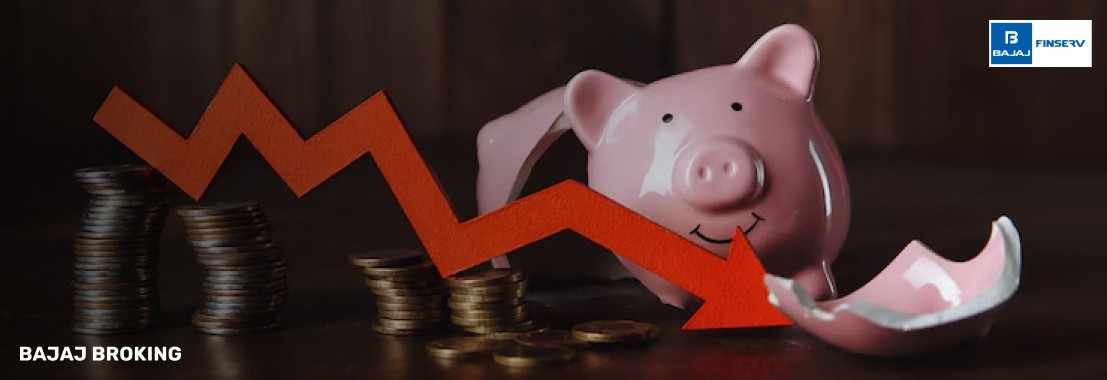It is crucial to understand risk while investing in mutual funds, as returns can change overnight. To make things easier, the Securities and Exchange Board of India (SEBI) launched the Riskometer. The SEBI Riskometer is a visual representation of mutual fund risks. The funds are grouped into a range of risk from low-risk to high-risk. The Riskometer looks a lot like a traffic signal, and it takes otherwise complicated information and simplifies it through an easy-to-read dial with risk levels.
It allows investors to gauge whether a fund has an acceptable level of volatility for their own tolerance, as well as their financial goals. More than merely a graphic, the Riskometer synthesizes lengthy fund documents into a more digestible format, allowing to assess mutual fund risks quickly and easily without evaluating dozens of fund documents. The Riskometer helps investors understand the overall risk profile of mutual funds, thereby signalling the level of risk involved with different mutual fund schemes.
History of Riskometer
The Riskometer has had its own journey. When SEBI first launched it back in 2013, it was clunky—more like an experimental gadget than the polished tool we see today. By 2015, it got a serious upgrade, and then again in 2020, SEBI really tightened things up.
The idea was always the same: give ordinary investors (like you and me) a clearer lens into mutual fund risk. But each iteration sharpened the detail—what was once broad categories turned into something more nuanced, more accurate.
Almost like watching a black-and-white TV evolve into 4K Ultra HD. Honestly, it is one of those rare cases where regulation actually made investing simpler.
Today, the mutual fund riskometer is everywhere—fund brochures, factsheets, even advertisements. You cannot miss it. And that is the point: to make sure nobody invests blind.
Riskometer Risk Levels in Mutual Fund
The SEBI Riskometer classifies mutual funds into five colour-coded risk levels, from low to high. It guides investors to choose mutual funds matching their risk appetite, from short-term savers to long-term equity seekers.
Risk Level
| Colour
| Products under the category
| Suitable for
|
Low
| Green
| Income funds, gilt funds, and fixed maturity plans with maturity less than 90 days
| Those who are risk-averse and prioritise safety
|
Moderately Low
| Light Green
| Short and medium-term bonds (91 days to 3 years)
| Those who want minimal risk but are okay with slightly longer duration funds
|
Moderate
| Yellow
| Hybrid debt-oriented funds, MIPs, arbitrage funds
| Those willing to accept some risk for marginally better returns
|
Moderately High
| Orange
| Gold ETFs, index funds, diversified equity funds, balanced equity-oriented funds
| Investors with long-term goals and moderate appetite for ups and downs
|
High
| Red
| Micro-cap funds, international funds, thematic or sectoral funds
| Aggressive investors chasing high growth despite volatility
|
Types of Risks in Mutual Fund Measured by Riskometer
The Riskometer reflects real risks. Equity funds face volatility and management calls; debt funds deal with rates, defaults, inflation. Universal risks—liquidity, concentration, currency shifts—affect all investments, shaping true investor exposure.
Let me break them down.
Equity fund risks
Market risk: Equity funds live and die by market swings. One bad quarter, and the NAV nosedives. The Riskometer reflects this with higher risk tags.
Management risk: Fund managers are human. A wrong bet or poor judgment can drag performance.
Volatility risk: Stocks can move wildly, sometimes without warning. If you want smooth rides, equity-heavy funds are not for you.
Liquidity risk: Ever tried selling a stock when nobody wants it? That is liquidity risk. The fund’s NAV takes the hit.
Debt fund risks
Interest rate risk: Bond values fall when rates rise. Classic see-saw effect.
Credit risk: If a company cannot pay back its debt funds, your fund suffers.
Liquidity risk: Debt instruments are not always easy to sell at a fair price.
Inflation risk: Inflation quietly eats away at your real returns—debt funds are vulnerable here.
Additionally Read: Debt Funds vs Liquid Funds
Risks Associated with Mutual Funds
Rebalancing Risk:
Fund managers often rebalance portfolios to maintain the desired asset allocation. This process may result in transaction costs and may affect the fund's performance. The Riskometer takes into account these adjustments, which may influence the mutual funds risk level.
Currency Risk:
When investing in international assets, changes in exchange rates can impact returns. Currency fluctuations are considered by the Riskometer in mutual fund to assess the risk, especially in global equity or debt funds.
Concentration Risk:
Concentrating investments in a single security or sector increases the potential for significant losses if that sector performs poorly. The mutual fund riskometer reflects this risk, which typically raises the mutual funds risk level for concentrated funds compared to low-risk mutual funds.
Inflation Risk:
Rising inflation can erode the purchasing power of returns, particularly in funds with fixed income securities. The Riskometer highlights this risk, especially for funds with longer durations or lower credit ratings.
Volatility Risk:
Sudden fluctuations in the prices of securities can lead to unexpected gains or losses. The Riskometer in mutual fund reflects this risk, particularly for funds that invest in volatile markets, such as equity or sectoral funds.
Conclusion
The Riskometer is not some boring compliance tick box—it is your compass in the unpredictable world of mutual funds. By glancing at it, you can figure out whether a fund fits your appetite for risk. Low-risk mutual funds for peace of mind. High-risk ones for growth chasers. The key is matching, not forcing.
Personally, I think of it like ordering food. Some people want bland khichdi because it is safe and predictable. Others want spicy street food that might set their stomachs on fire but is unforgettable. Neither is wrong. The Riskometer just tells you what is on your plate before you dig in.
And once you see investing through that lens, building your portfolio feels less like a gamble and more like… well, a choice you are consciously making. Which, to me, is what investing should always be about.





